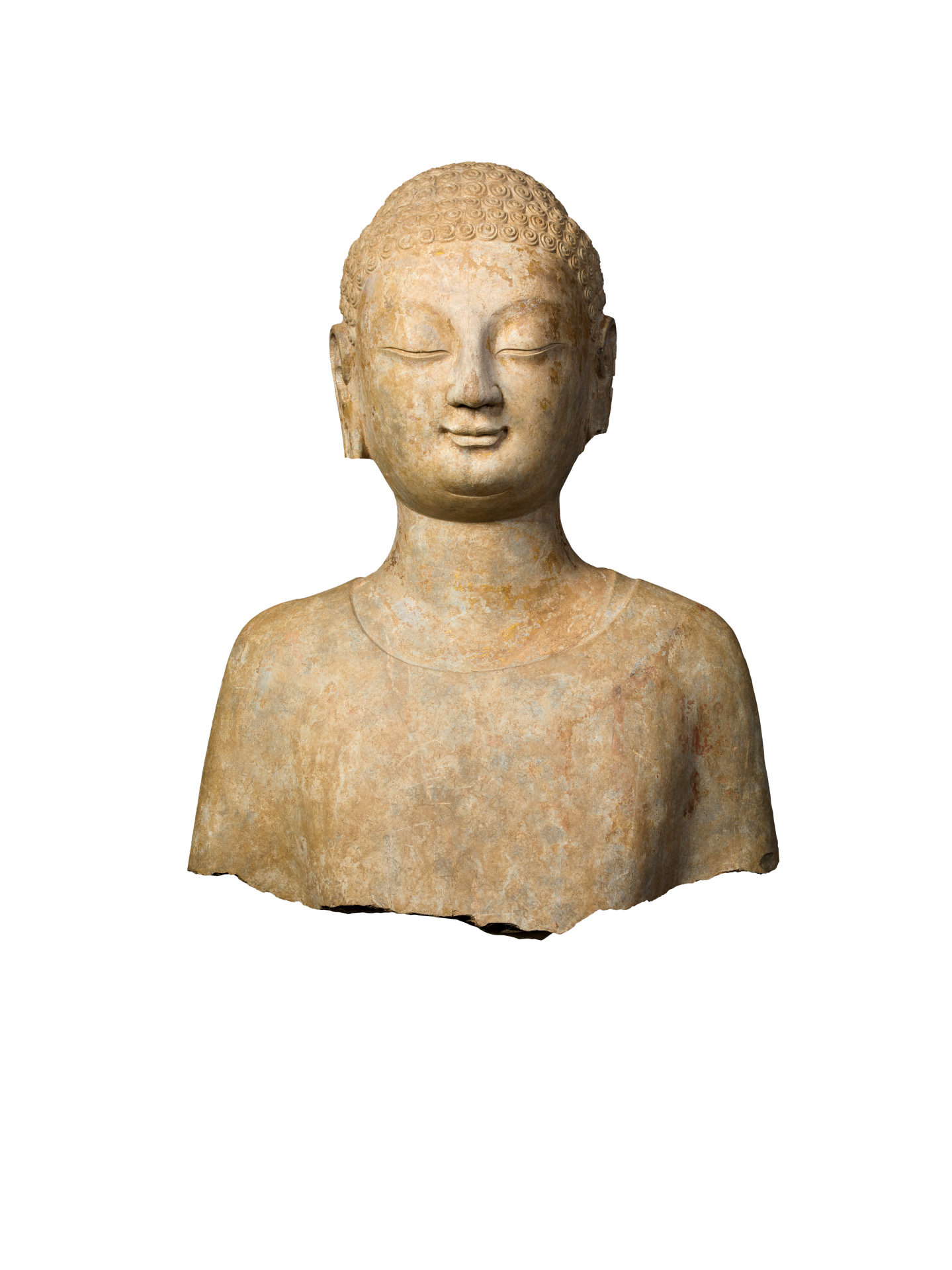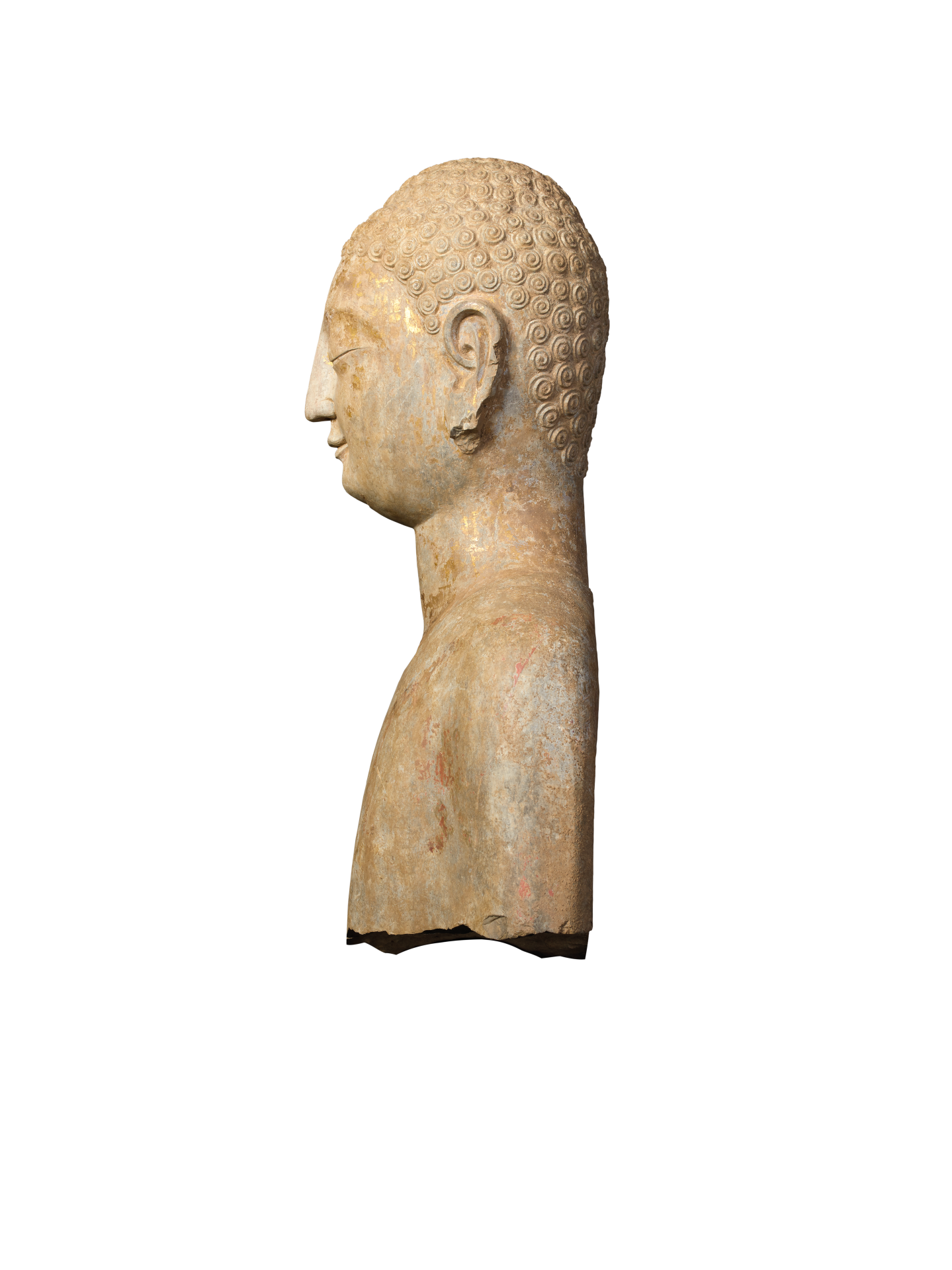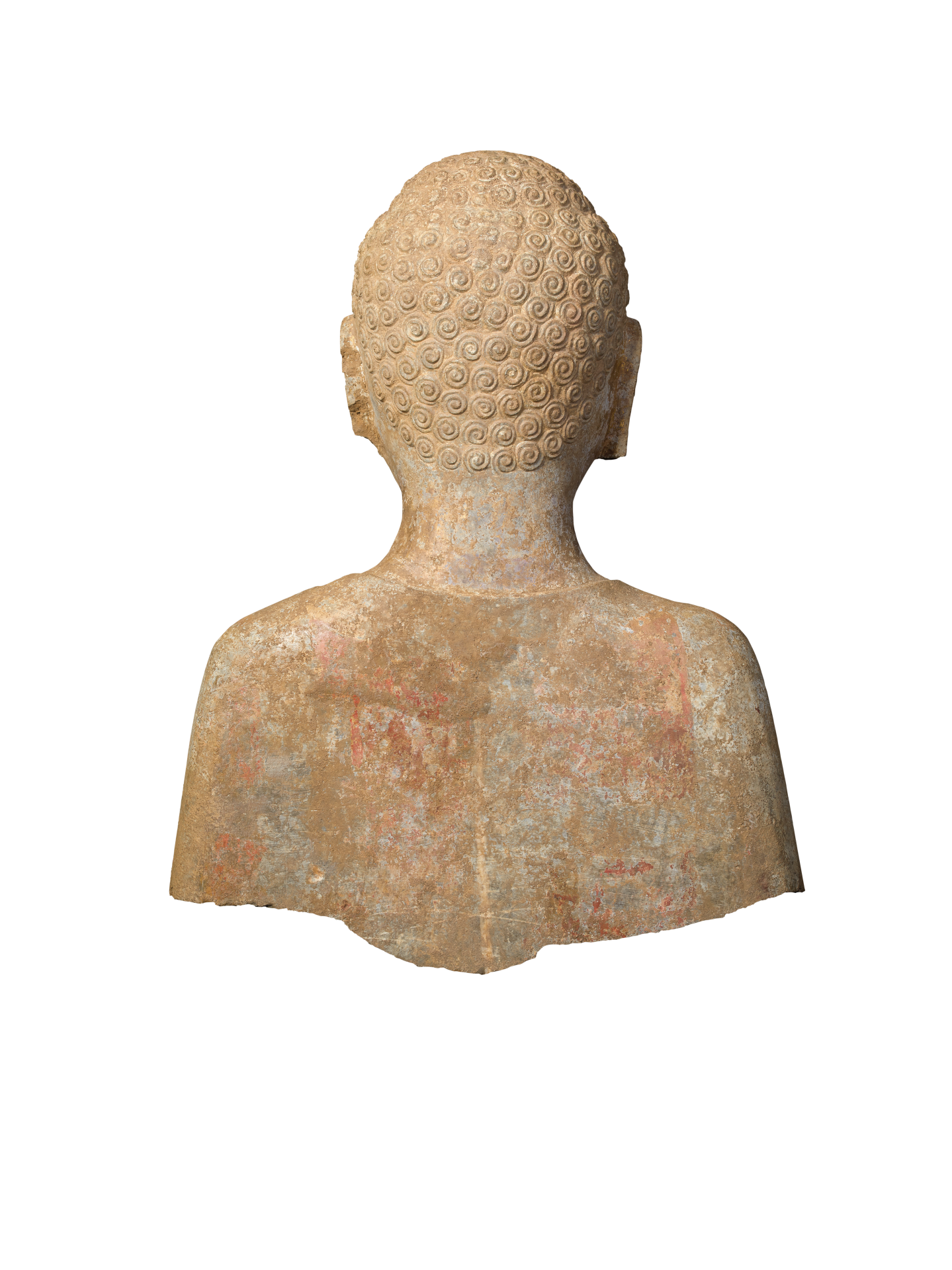Bust of Buddha
Buddhist sculptures known as Qingzhou Statuary are mainly distributed in the northern part of Shandong Province. The richest yield came from the site of Longxing Monastery in Qingzhou, with the majority of the finds dated to the Eastern Wei and Northern Qi dynasties. These statues are noted for their unique style and superb artistic value. They demonstrate one of the important regional styles in the late period of the Northern and Southern Dynasties (420-589 CE). Qingzhou Statuary are known for their strong regional flavour. Apart from sophisticated statues carved in the round during the Northern Qi dynasty, many works of this period are also resplendently adorned with gilt and polychrome decorations displaying a vibrant palette. Their Bodhisattvas are elaborately ornamented with heavy and luxurious multi-stranded necklaces and jewellery. The Buddha’s kāṣāya come in many different styles. The fabric appears diaphanous and close-fit. The drapery is succinctly and fluidly rendered. Some are even devoid of any depiction of drapery. All these contribute to the aesthetic uniqueness of Qingzhou Statuary.
This Buddha bust bears strong flavour of the iconographic style of Qingzhou Statuary. The head is surmounted by an uṣṇīṣa gently protruding under tight snail-like curls. The well-rounded face is delicately featured with plump cheeks, a broad smooth forehead, long narrow eyes, full lips with deeply indented and uplifted outer corners, and a placid and kindly countenance. The diaphanous and close-fit kāṣāya, covering both shoulders, is devoid of drapery depiction. This is a key characteristic showing the stylistic influence of Indian Buddhist art on Qingzhou Statuary. On closer inspection, one finds traces of gilt on the face and neck, and vestiges of black and red pigments as well as faintly visible grid pattern on the surface of the kāṣāya, indicating that the former presence of polychrome decoration. Although only the bust of this statute remains, its charm and vividness has fully proven the beauty of Northern Qi Buddhist sculptural art.


